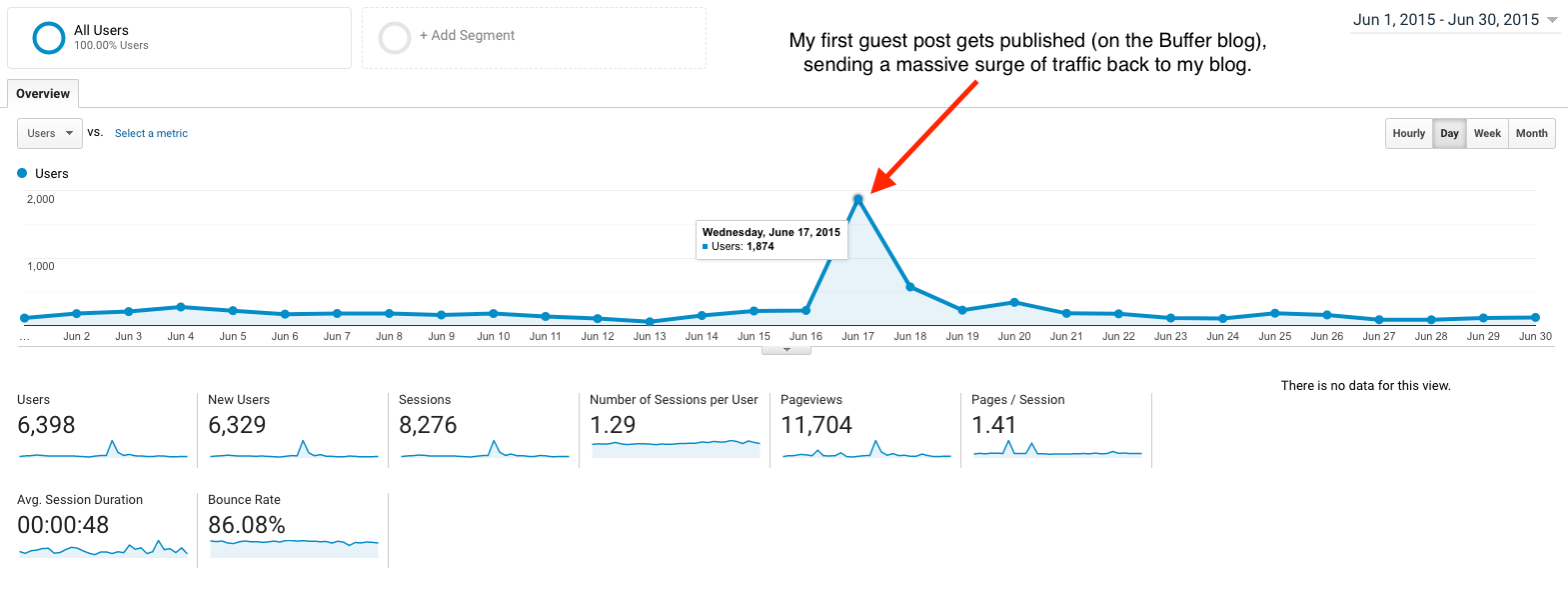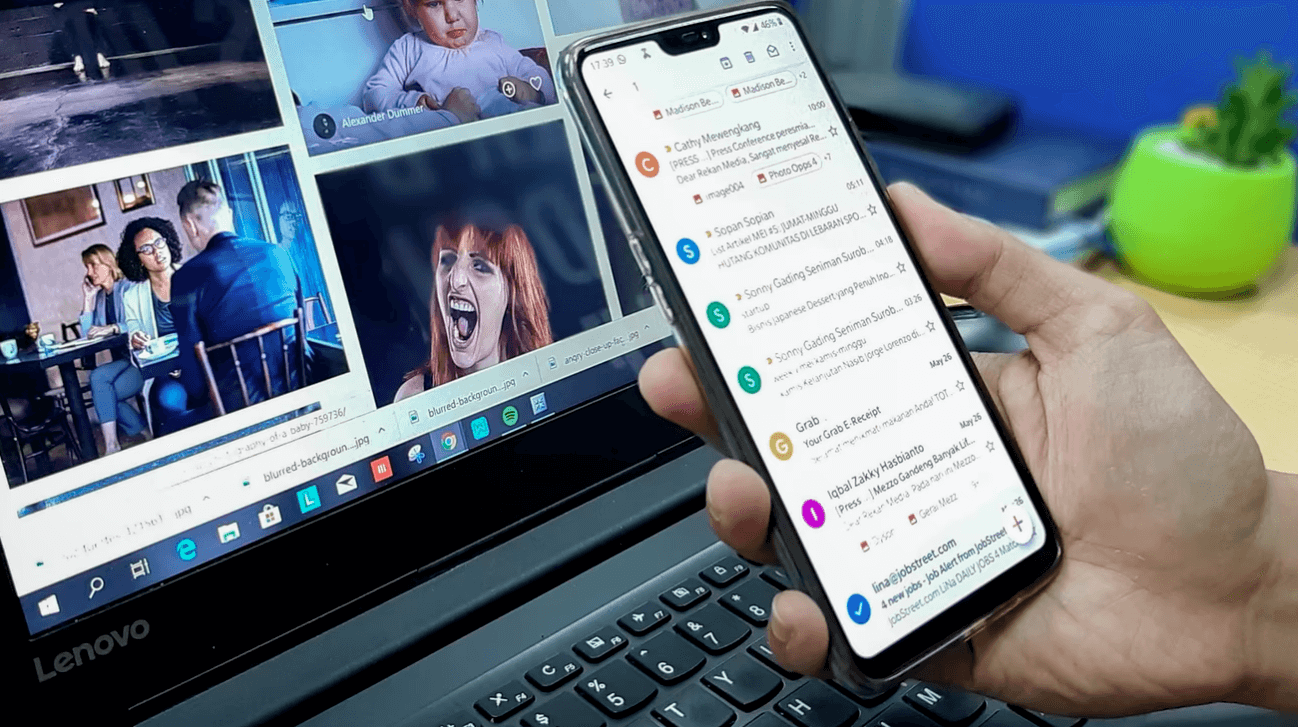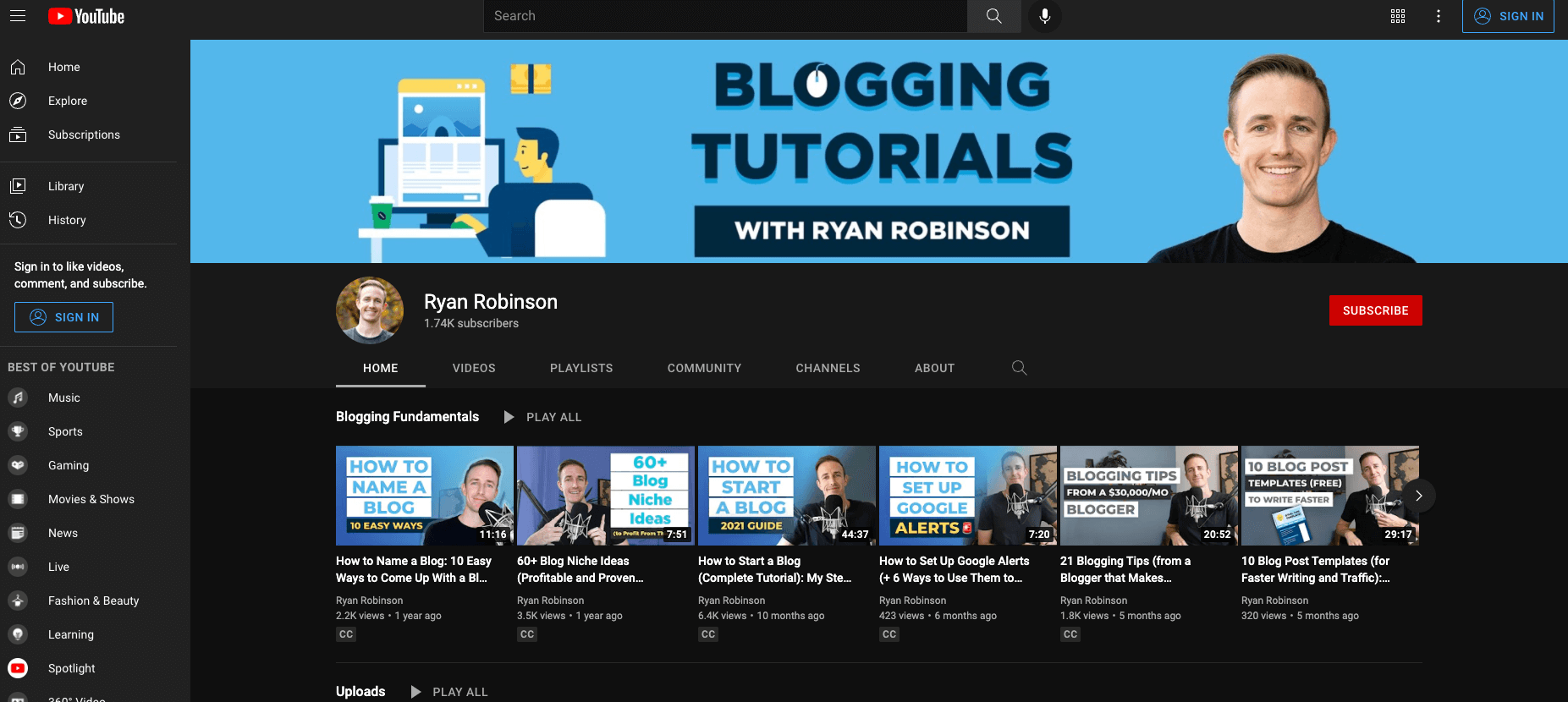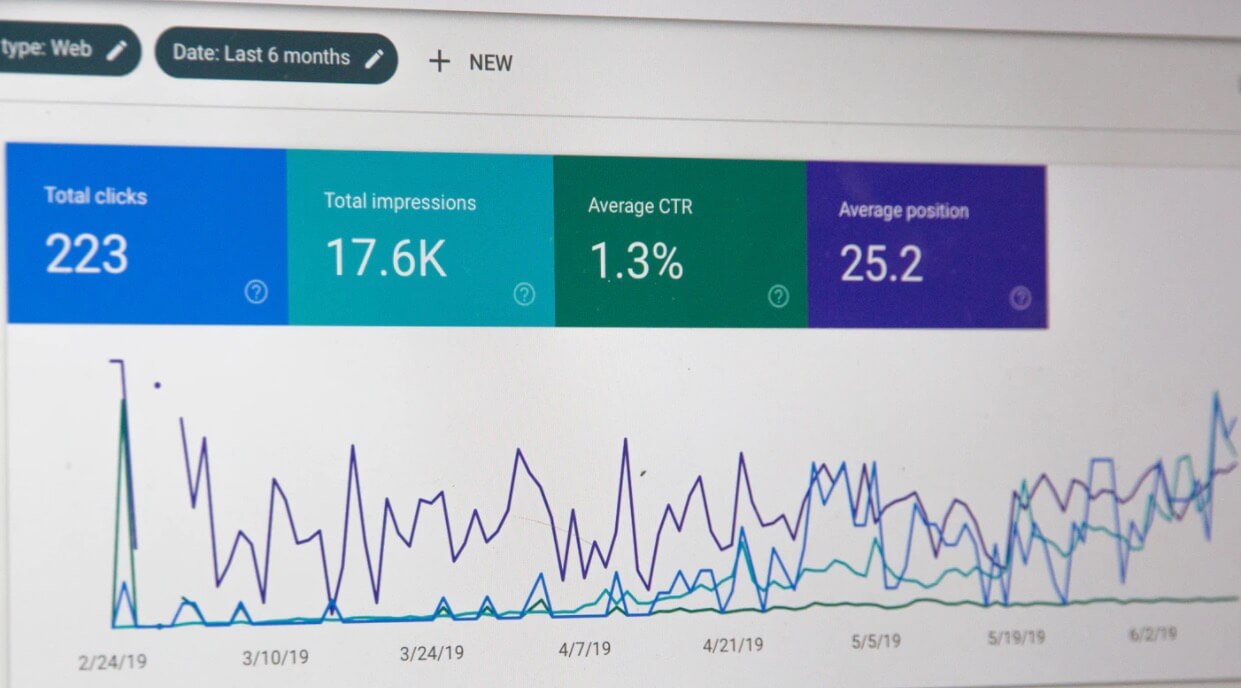Whether you’re running an online business or you blog just for fun, one metric you likely keep a keen eye on is your website traffic. Without visitors to your site, you aren’t going to achieve your blog goals. Enter: today’s guide about how to diversify your traffic sources.
Many websites heavily rely on Google for their traffic. And while Google is hugely important, you don’t want it to be your only traffic source.
However great you are at SEO (search engine optimization), a single Google algorithm update could end up wiping out a lot of your hard-earned traffic.
To keep your blog going strong, you want to have multiple sources of traffic.
This way, even if one type of traffic drops, you’ll still have plenty of website visitors. In this article, I’m going to take you through the key types of traffic your website can get… and explain how you can diversify your traffic sources (as a smart feature in your overall blog strategy).
Ready to get started? Let’s dig in.
How to Diversify Your Traffic Sources (12 Ways) in 2024
- Guest Posting
- Thought Leadership
- Social Media for Bloggers
- Leverage Your Email List
- Be a Podcast Guest
- Answer HARO Queries
- Trade Email Newsletter Mentions
- Speak at Conferences (Online and In-Person)
- Pitch Local News Stations on Stories
- Produce Videos for YouTube and Social Media
- Use Streaming Platforms Like Twitch
- Target Topics, Not Keywords
Disclosure: Please note that some of the links below are affiliate links and at no additional cost to you, I’ll earn a commission. Know that I only recommend products and services I’ve personally used and stand behind. When you use one of my affiliate links, the company compensates me, which helps me run this blog and keep my in-depth content free of charge for readers (like you).
Use My 50+ Powerful Free Blogging Tools Today

When I first started blogging, I couldn’t afford fancy tools. That sucked. And that’s why I’ve built a stable of powerful free blogging tools ranging from keyword research to an AI article writer, blog idea generator and more. Forever free for all to use—no strings attached.
What Are Traffic Sources?
Traffic isn’t just about search engines. In fact, there are six key sources of traffic, and there’s a good chance you’re already getting traffic from at least some of them.
Organic Traffic
Organic traffic comes from search engines. It’s the site traffic you get when someone types in what they want to know — like “how to grow tomatoes” — and clicks on a result.
For many bloggers and online businesses, organic traffic accounts for a large proportion of their visitors. And while organic traffic can come from any search engine, in practice, most of it will be from Google search.
Direct Traffic
Direct traffic is when someone comes straight to your website by typing in your URL (or clicking on a bookmark).
This type of traffic includes lots of repeat, loyal visitors: people who love coming back to your site again and again.
You may also get direct traffic if you advertise your website in print magazines, on business cards, or through word of mouth.
People will type in your URL to access your site, but you won’t necessarily know what prompted them to do so.
Referral Traffic
Referral traffic comes from other websites — usually from fellow bloggers. With this type of traffic, your visitor has clicked on a link to get to your site.
That link might be from a blogger who mentions or quotes from one of your blog posts. It could be from someone’s list of favorite blogs.
Or it could be from your bio in a guest post you’ve written (we’ll discuss guest posting shortly).
Paid Search Traffic
Paid search traffic comes from ads that you place in Google search (or on other search engines). These ads appear above regular (organic) search results, meaning they often get clicked on by users.
This type of website traffic can be hugely important for many online businesses. However, it does cost money.
You pay a fee for every person who clicks on your website link in the ad — even if they don’t purchase anything from you.
Email Traffic
Email traffic comes from people who click a link in an email. Usually, this is an email you sent — though it could also be from a mention in someone else’s email newsletter.
Many bloggers find that email traffic generates more sales than other types of traffic. That’s because the people on your email list already know you, at least a bit — and they’re pretty likely to see your email.
(With other traffic sources, like social media. Not all your followers will see every post.)
Social Traffic
Social traffic comes from social networks like Twitter, Facebook, Pinterest, and Instagram. Someone clicks on a link, pin, post, and so on, and then comes to your website.
This could be through your own social media channels — but in many cases, bloggers will find that a lot of their social media traffic comes from posts, pins, retweets, shares, and so on from other bloggers and influencers with larger social media audiences.
How to Diversify Your Traffic Sources in 2024
There are dozens of different possible ways to diversify your traffic sources. Below, I’ve listed the best traffic sources for most bloggers. Of course, if you’re getting good, targeted traffic from another source, keep using that too.
1. Guest Posting
One fantastic way to get free website traffic is to guest post on other people’s blogs.
Writing a guest post lets you get your ideas in front of readers who haven’t come across you before (and this can tie in very well with thought leadership, which we’ll discuss next).

When you write a guest post, you’ll have the opportunity to add a short “bio” about yourself — this is usually published at the end of your post.
You can use your bio to link back to your blog or, even better, to a piece on your blog that ties in with your guest post.
Guest blogging is one of the best traffic sources for referral traffic … but the benefits don’t stop there.
Guest posting can also boost your SEO, leading to additional organic traffic, as you’re getting backlinks from high-quality websites.
Plus, if you’re writing for a blog larger than your own, your post is likely to get more social shares … bringing social traffic to your blog.
2. Thought Leadership
The term “thought leadership” means expressing ideas that reflect your expertise in your field.

Thought leaders tend to write interesting, perhaps controversial, blog posts, articles, and even books. This leads to them being quoted and referenced by others in their field.
If you can establish a reputation as a thought leader, you’re likely to find that you get more referral traffic from other bloggers linking to you.
It can be hard to get the attention you need when your own blog isn’t well-known, so you might want to also publish guest posts related to your core ideas and interests.
3. Social Media for Bloggers
Social media can be a great source of not just free website traffic but also ideas and connections. It allows for a two-way conversation more easily than blogging.
Over the past decade, many bloggers have found that the discussion that once took place in the comments section of their blogs has now moved to social media.
You’ll likely find it most effective to focus on just one or two social media sites, rather than trying to keep up with lots of different ones.
Choose the social media platforms that fit best with your target audience and blogging niche — for instance, Pinterest is great if you have a craft or food related blog. Instagram is perfect for lifestyle blogs.
4. Leverage Your Email List
If you haven’t already started building your email list, make it a priority to get one set up. Your email list will be a hugely valuable source of traffic (and income) as your blog grows.

To drive more traffic from your email list, make sure you email and let readers know about new blog posts. Many bloggers do this by sending out a “teaser” each time they publish a new post.
Instead of sending the entire post via email, they pose a question, quote from the post, or make a promise about what the reader will gain from reading it.
This encourages people on your email list to click the link to read your full post — thus driving more traffic to your website.
5. Be a Podcast Guest
Whatever your blog’s niche, there are sure to be plenty people who’ve started podcasts in your space. Contact any that feature guests and express your interest in going on the show. Some podcasts will even have a form you can fill in to apply.
Being a podcast guest lets you tell listeners about yourself and your blog, as well as giving you an opportunity to share your ideas. It’s also a great chance to connect with the podcast host and any fellow guests on your episode. You should get a link back to your site in the show notes.
6. Answer HARO Queries
HARO stands for “Help a Reporter Out”. This platform is essentially a huge mailing list that you can sign up for, selecting your areas of expertise.

Three times a day, you’ll receive an email with a long list of queries — questions for articles that reporters are working on.
By answering queries, you have a chance of being quoted (and linked to) in the press.
HARO reporters tend to get a lot of responses, so try to go above and beyond in being helpful — this maximizes your chances of having your response published.
Make sure you deliver exactly what they’re asking for, and include any extras, like your headshot, URL, and social media links so the reporter has those easily to hand.
7. Trade Email Newsletter Mentions
Want to get more email traffic? Partner with another blogger in your niche and trade email newsletter mentions. They’ll talk about you and your blog in their newsletter … and you’ll return the favor.
This is a fantastic way to get an instant traffic boost, and grow your audience and name recognition in your niche.
Even if readers don’t instantly click through to your website, they may well remember your name next time they hear you mentioned on a blog or in a newsletter … and they’ll eventually come to check out your site.
8. Speak at Conferences (Online and In-Person)
Being a conference speaker is another great way to establish thought leadership… and it can quickly draw traffic to your blog.

It’s also a good way to make sales, especially if you’re speaking about a topic that’s closely related to your product or service.
Whether you’re speaking online or in-person, you’ll have your details published on the conference’s website — making it easy for people to click through to your website.
9. Pitch Local News Stations on Stories and Advice
Want to be on the news? Local radio stations (and local newspapers) are always looking for stories. Get in touch and tell your story — or let them know about your expertise and offer advice.
You might not get a sudden rush of traffic, but this is a great way to boost your credentials and credibility.
It also looks impressive to your current readers, so don’t forget to tell your email list and social media followers about being featured in the news.
10. Produce Videos for YouTube and Social Media
Many people prefer to watch rather than read… if you’re not catering to them, you’re missing out on a big chunk of your audience.

Experiment with creating videos for YouTube (or for your social media channels). You could even turn some of your most popular blog posts into videos, like I’ve done on my own YouTube channel.
Keep your video content short and focused, and always include a call to action to bring people back to your blog.
Make sure you write a detailed description for each video: this makes it more likely that people will find it when searching for that type of information, and it gives you the opportunity to include links to related blog posts on your site.
11. Use Streaming Platforms Like Twitch
Another great way to bring in an audience is using streaming platforms like Twitch.
While you might think that Twitch is just for gaming, there are plenty of other categories, like Talk Shows (think panel discussions and podcasts), Cooking, and Creative (art, animation, design, etc).
These can be a great way to find — and connect — with a larger audience.
Before you start streaming, make sure your internet connection is up to the job. You’ll need it to be able to broadcast decent-quality live video. If you’ve got a slow connection, stick with pre-recording and uploading videos to sites like YouTube.
12. Target Topics, Not Keywords
Plenty of bloggers do keyword research and produce posts that are carefully optimized for a specific search term. Targeting long-tail keywords can be a powerful way to bring in much more qualified organic traffic (with less competition, too).

Google’s algorithms are increasingly focusing on topics, not keywords — and by doing the same, you can capture more organic traffic.
If you already have a lot of posts, a great way to make the most of them is to group them into topics. These will normally be a bit narrower than your blog’s categories.
You want to organize your blog’s content to have a central “hub” page for each topic that links to all your other content on the same topic.
Start Diversifying Your Traffic Sources Today
If almost all of your traffic comes from Google search, it’s definitely time to start diversifying. The more varied your traffic sources, the more resilient your blog will be
Plus, even a little bit of traffic from some sources (like email) will often bring in more sales than a high volume of search engine traffic.
This week, pick at least one of the ideas above to try it out on your blog.
And if your blog isn’t quite up and running yet (or if you’re stuck), don’t worry! I’ve got a full guide on How to Start a Blog to help you get everything set up in just 10 – 15 minutes.
Use My 50+ Powerful Free Blogging Tools Today

When I first started blogging, I couldn’t afford fancy tools. That sucked. And that’s why I’ve built a stable of powerful free blogging tools ranging from keyword research to an AI article writer, blog idea generator and more. Forever free for all to use—no strings attached.


Hi Ryan,
What a great list! I think traffic is one of the most important considerations of any website owner, and these ways will really help people diversify their sources to earn traffic. I use most of these sources to generate traffic for my website, and I am looking forward to trying out other options on the list as well. Thanks a lot for sharing this helpful resource, it was a great help. I will definitely share this within my network.
Thanks so much for the kind words, John! Glad you found some useful tidbits here to diversity your traffic 🙏
This article was so helpful. Really enjoyed your blog and information.
Great to hear, Xavier! Good luck with your blog traffic 🙂
Another great piece of content. Why you do not use images within your articles? Not the featured image but any image inside the article.
Thanks,
Thanks, Marino! To answer your question, I actually do *almost* always use a good amount of images throughout my content… but I wanted to get this new post published quickly, so I’ll be coming back to update it with images soon. Holiday priorities! 🙂
Great piece of suggestions. My book blog is new & your blog posts are quite helpful. Thanks for sharing these awesome tips.
You’re very welcome! 🙏
Blog commenting is also something that helps to get quality backlinks for your website. There are various websites that boost the traffic of your website. It is also a nice platform to connect with your audiences.
In my experience, blog commenting is more useful for building relationships with other bloggers in your niche… so that perhaps you could one day pitch them on taking a guest post from you, or doing some other kind of collaboration. The backlinks you get in most comments sections aren’t going to pull much real SEO weight, so my advice is to keep your focus on trying to build real relationships through thoughtful comments 🙂
Hello Ryan, this was really in-depth and heavy. Thanks for sharing such a post with us. We’re really grateful.
You’re welcome! Glad you found some useful traffic ideas in here 🙂
Thank you Ryan! It’s always great to diversify your traffic instead of relying on just SEO. While your SEO bears fruit, leveraging other platforms especially videos since they’re the trend right now isn’t a bad move at all.
For my Faith blog, I use a fair share of SEO, email list, social media and YouTube videos.
I’ll share this resource with my community. I believe it will help other bloggers and writers.
thanks for sharing this great information Ryan.. you’ve been my mentor for years now
Thank you for sharing this informative article.